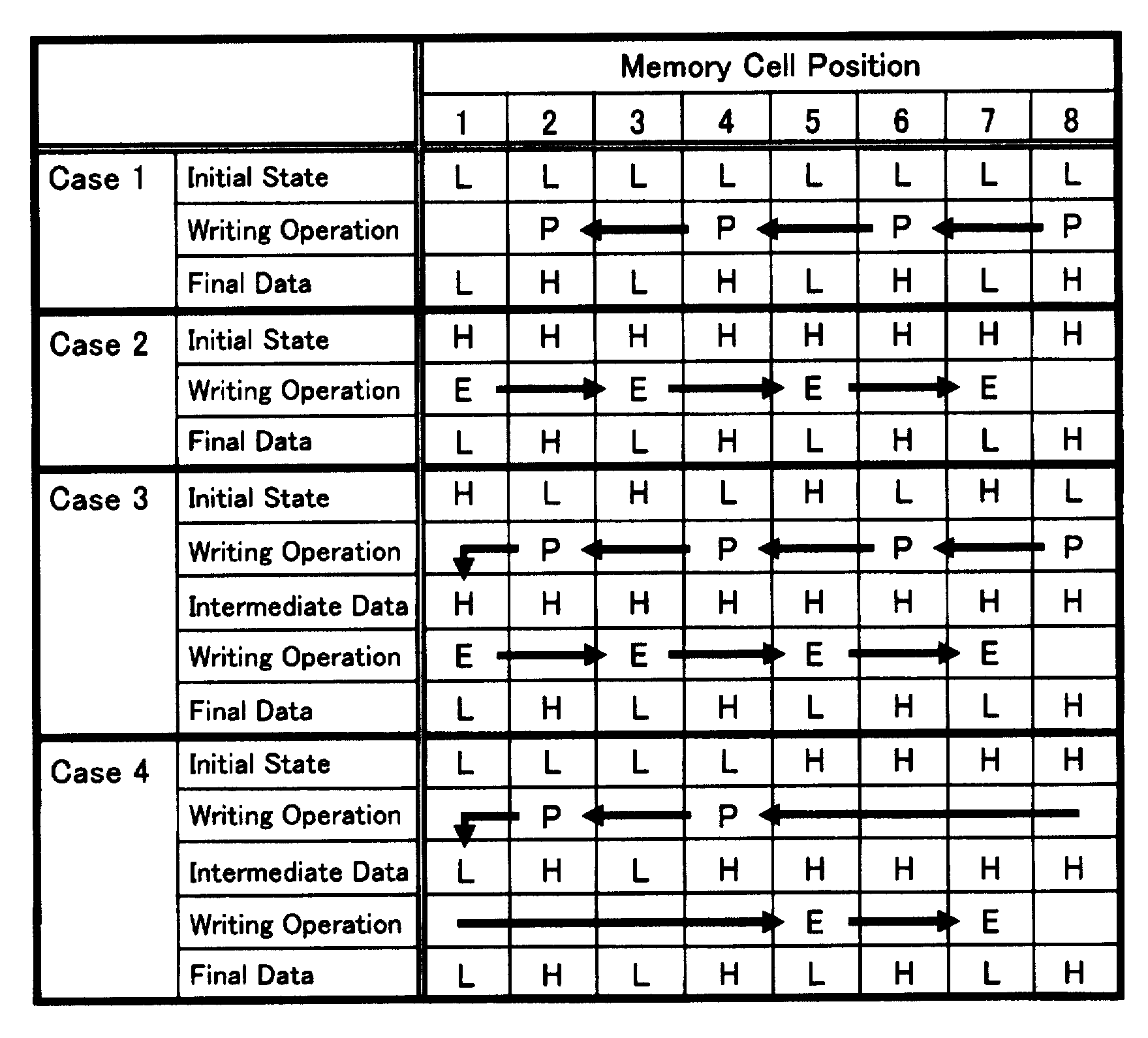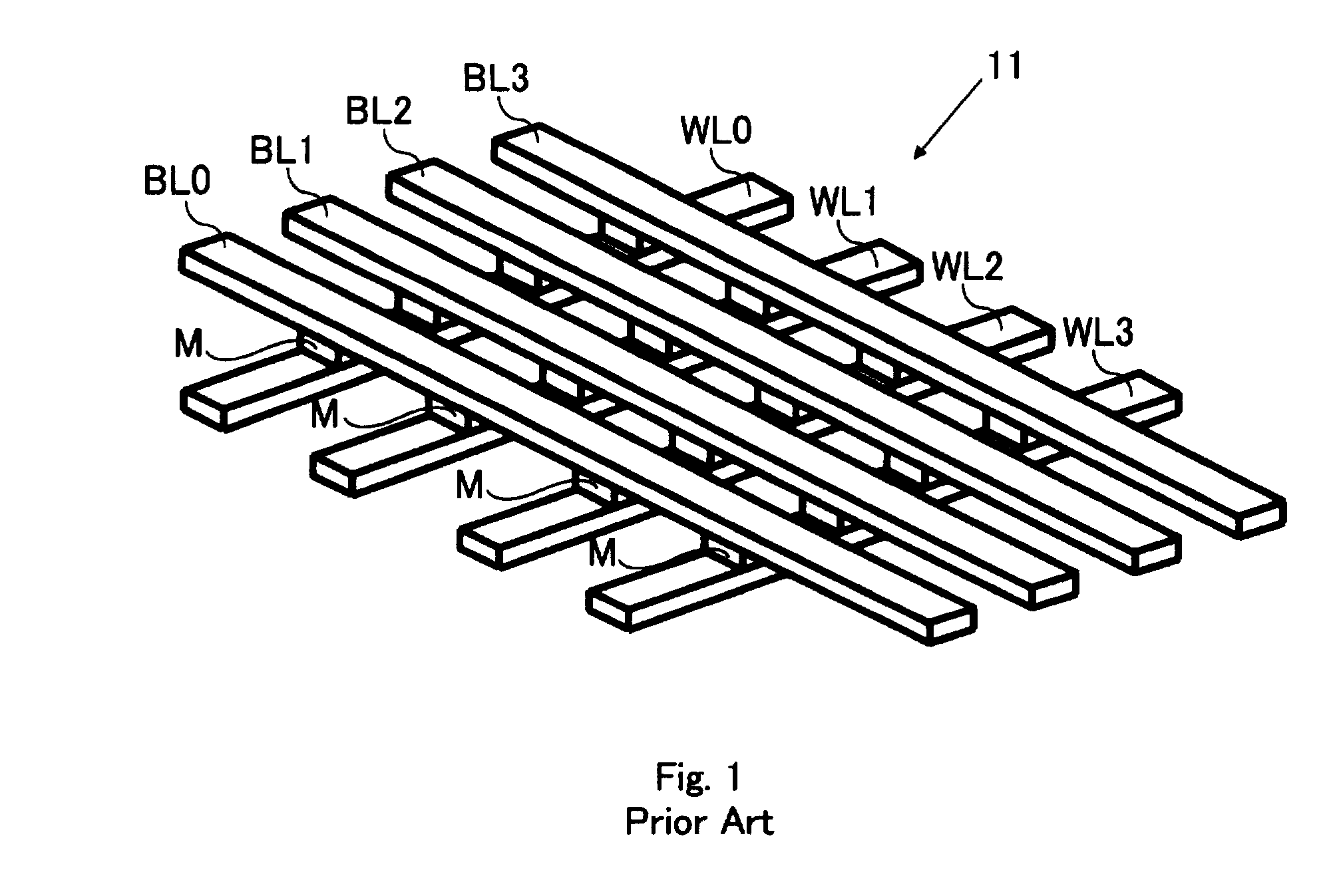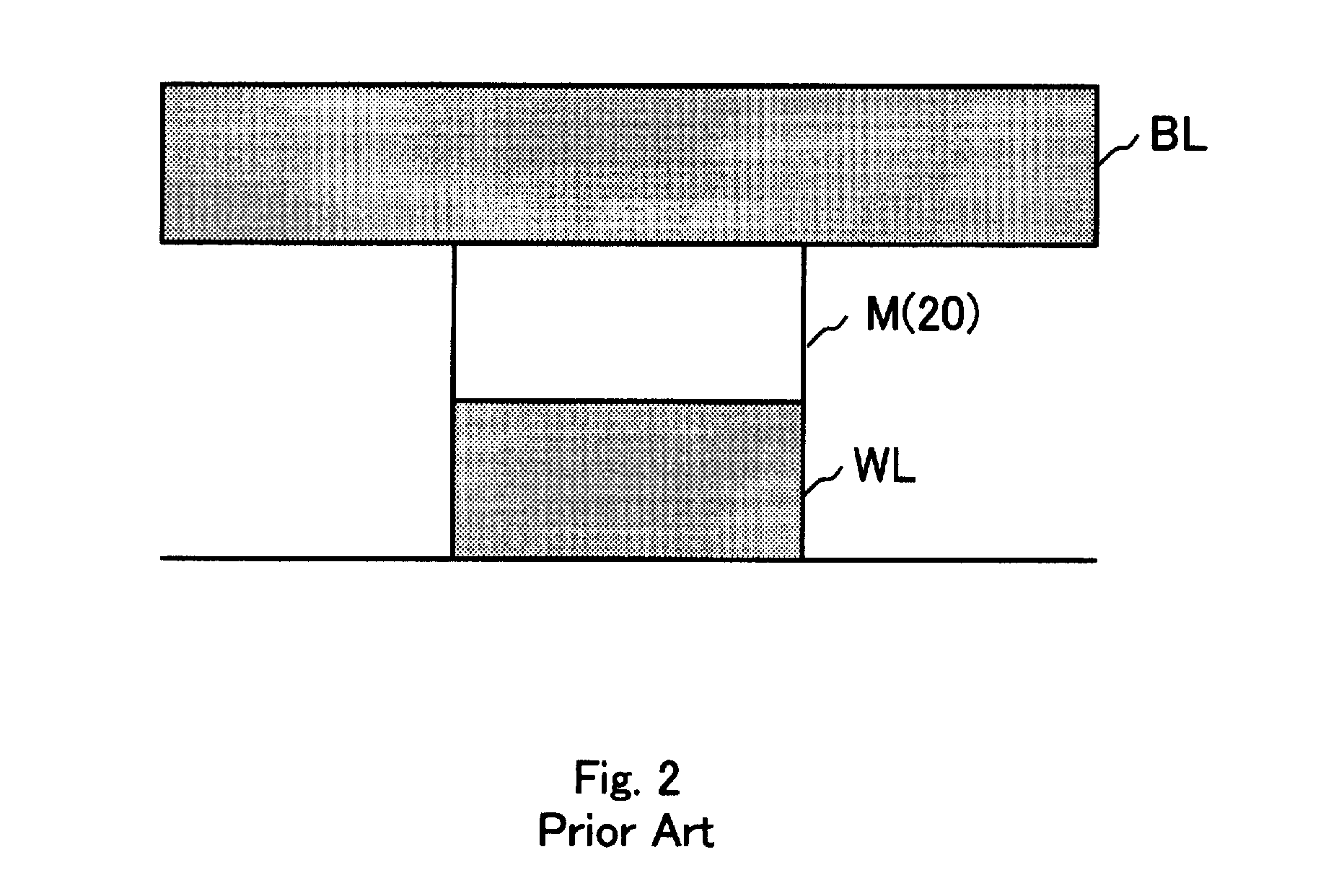Nonvolatile semiconductor memory device and data writing method
a semiconductor memory and data writing technology, applied in digital storage, electrical analogue stores, instruments, etc., can solve the problems of reducing voltage resistance, limiting the miniaturization of flash memory in a plane direction, and difficulty in arranging the contact hole at the same wiring interval as the word line and the bit lin
- Summary
- Abstract
- Description
- Claims
- Application Information
AI Technical Summary
Benefits of technology
Problems solved by technology
Method used
Image
Examples
first embodiment
[0080]First, a description will be made of a memory cell array in which data is written according to the method of an example embodiment. The memory cell array is constituted such that nonvolatile memory cells are arranged in rows and columns and information can be electrically written in the memory cell specified by an address inputted from the outside. Furthermore, information stored in the memory cell specified by an address input can be read out.
[0081]More specifically, the memory cell array has a cross-point type memory cell array structure in which two-terminal structured memory cells each having a variable resistive element storing information by the change of electric resistance are arranged in rows and columns, a plurality of word lines extending in a row direction and a plurality of bit lines extending in a column direction are provided, one ends of the memory cells in the same row is connected to the common word line, and the other ends of the memory cells in the same col...
example 1
[0111]A description will be made of a case where data is sequentially written along the word lines in the memory cell array in which the contact C of the word line is positioned in two ways: some are positioned at the right end while others are positioned at the left end according to the row address of the word line as shown in FIG. 6. Specifically, the contacts of the word line are positioned at the right ends in the even-numbered word lines WL0, WL2, WL4, . . . , and they are positioned at the left ends in the odd-numbered word lines WL1, WL3, WL5, . . . In addition, the reason why the contacts C are positioned as shown in FIG. 6 has been already described in the above “problems to be solved by the Invention”. A description will be made of the case where the programming is sequentially executed on the assumption that the memory cell array is controlled such that the resistance values of all memory cells are in the low resistance state (erase state) in the initial state before writ...
example 2
[0115]A description will be made of a case where data is sequentially written along word lines in a memory cell array in which contacts C are positioned at both right and left ends of the word line regardless of the row address of the word line as shown in FIG. 15. In addition, the arrangement of the contact C as shown in FIG. 15 can be implemented by devising the layout of a contact pad or enlarging the wiring distance between the word lines. A description will be made of a case where data is sequentially programmed in a memory cell array in which resistance values of all memory cells are controlled to be in the low resistance state (erase state) in the initial state before writing, hereinafter.
[0116]According to the method of an example embodiment, as shown in FIG. 16, the access order to each memory cell for programming is such that a word line WL0 designated by the lowest-order row address is selected first and then a bit line BL0 designated by the lowest-order column address is...
PUM
 Login to View More
Login to View More Abstract
Description
Claims
Application Information
 Login to View More
Login to View More - R&D
- Intellectual Property
- Life Sciences
- Materials
- Tech Scout
- Unparalleled Data Quality
- Higher Quality Content
- 60% Fewer Hallucinations
Browse by: Latest US Patents, China's latest patents, Technical Efficacy Thesaurus, Application Domain, Technology Topic, Popular Technical Reports.
© 2025 PatSnap. All rights reserved.Legal|Privacy policy|Modern Slavery Act Transparency Statement|Sitemap|About US| Contact US: help@patsnap.com



